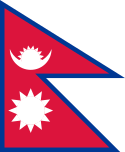Zimowe Igrzyska Azjatyckie 1999
| IV Zimowe Igrzyska Azjatyckie | |
|---|---|
| Motto: Azja, jasno błyszcząca dzięki wiecznej przyjaźni | |
| Miejsce | Gangwon, |
| Liczba ekip | 23 |
| Liczba sportowców | 798 |
| Liczba konkurencji | 43 w 7 dyscyplinach |
| Otwarcie | 30 stycznia 1999 |
| Zamknięcie | 6 lutego 1999 |
| Oficjalne otwarcie | - |
| Przysięga olimpijska | - |
| Znicz olimpijski | - |
| Stadion | - |
III Zimowe Igrzyska Azjatyckie odbywały się od 30 stycznia do 6 lutego 1999 w prowincji Gangwon w Korei Południowej[1]. Zawody odbywały się w Yongpyong, Chuncheon i Gangneung. Zawody narciarskie odbyły się pomimo rekordowo niskich opadów śniegu w tym regionie[2].
Maskotka
Maskotką Zimowych Igrzysk Olimpijskich 1999 był pomarańczowy niedźwiadek z białym półksiężycem na brzuchu, w czapce mikołaja, trzymający pochodnię z logo Igrzysk Azjatyckich[3].
Dyscypliny
Rozegrano zawody w 43 konkurencjach, w 7 dyscyplinach. Z programu wycofano narciarstwo dowolne.
- biathlon
- biegi narciarskie
- hokej na lodzie
- łyżwiarstwo figurowe
- łyżwiarstwo szybkie
- narciarstwo alpejskie
- short track
Państwa biorące udział w IV Zimowych Igrzyskach Azjatyckich
Gwiazdką * oznaczono reprezentacje złożone tylko z delegatur państwowych
Tabela medalowa
| # | Reprezentacja | Razem | |||
|---|---|---|---|---|---|
| 1. | 15 | 10 | 11 | 36 | |
| 2. | 11 | 10 | 14 | 35 | |
| 3. | 10 | 8 | 7 | 25 | |
| 4. | 6 | 14 | 9 | 29 | |
| 5. | 1 | 1 | 1 | 3 |
(Kraj organizujący Igrzyska wyróżniony. Nie są wliczone medale ze sportów pokazowych.)
Przypisy
Linki zewnętrzne
Media użyte na tej stronie
Chinese Taipei Olympic Flag. According to the official website of Chinese Taipei Olympic Committee, Blue Sky(circle) & White Sun(triangles) above the Olympic rings is neither the National Emblem of the Republic of China, nor the Party Emblem of Kuomintang (KMT), but a design in between, where the triangles do not extend to the edge of the blue circle, as registered at International Olympic Committee in 1981 and digitally rendered in 2013. Besides, the blue outline of the five-petaled plum blossom is broader than the red one. Moreover, the CMYK code of the blue one and the Blue Sky & White Sun is "C100-M100-Y0-K0", and different from the Olympic rings (C100-M25-Y0-K0). Note that it's the only version recognized by IOC.
The Flag of India. The colours are saffron, white and green. The navy blue wheel in the center of the flag has a diameter approximately the width of the white band and is called Ashoka's Dharma Chakra, with 24 spokes (after Ashoka, the Great). Each spoke depicts one hour of the day, portraying the prevalence of righteousness all 24 hours of it.
The national flag of Kingdom of Thailand since September 2017; there are total of 3 colours:
- Red represents the blood spilt to protect Thailand’s independence and often more simply described as representing the nation.
- White represents the religion of Buddhism, the predominant religion of the nation
- Blue represents the monarchy of the nation, which is recognised as the centre of Thai hearts.



























